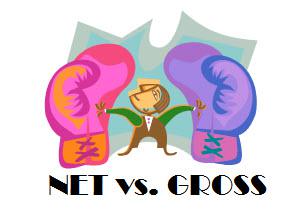
When considering how you want to approach attribution one of the first fundamental questions you should ask – do you want to use gross or net sales? Depending on which underlying metric you start with, your results will be significantly impacted. To figure out which path to go we recommend asking yourself (and your organization) four fundamental questions:
- How large are returns, exchanges, and other types of corrective transactions for your business?
- How does your business (typically managed by IT) make data available for analysis?
- What is the timing of your reports/analysis?
- Does your attribution solution support customer level analysis?
Returns and Exchanges
The first step is to find out what percentage of your sales result in returns or exchanges, as well as the average time after the sale returns typically happen. You may be in a business with a very small percentage of returns, in which case your answer to the overarching question may be more straightforward than those organizations that have very high return rates and long lag times. This information will be useful as you walk through the rest of the decision process.
Sales Data
Next, find out how your IT or BI team will be extracting the sales data. A basic but important question is whether the transaction data breaks out returns or exchanges. If it doesn’t, it will also be important to know whether the transactions already have returns and exchanges backed out. The biggest factor here will likely be your system of record – a data warehouse or direct from a transaction/POS system.
Timing of Reports and Analysis
Assuming you can get access to both sales and returns/exchanges, think next about the time horizon of your analysis. Are you conducting a historical study, say 2011, where you will get a one-time extract or will you be doing real time (or near real time) analysis? You may actually be doing both, especially if this is your first journey into advanced attribution. What you want to understand here is the lag between your reporting and your data. In the case of analyzing 2011 for the first time (since it is now Aug 2012), that gives us a six month lag between the last day of reporting we want and data being “complete”. The larger that lag, the closer to “net” sales we can expect since any returns or exchanges that were going to happen most likely already did. If you are operating near real time, then you have a higher likelihood that any potential returns haven’t happened yet. So by de-facto you may be dealing with gross sales.
Customer Level Analysis
Finally it is important to investigate how your attribution solution works under the covers. More advanced attribution solutions work at the customer level, while older, less sophisticated ones use highly aggregated data. When working at the customer level you have the ability to evaluate each customer’s attribution per sale – which makes net sales very powerful. For example, if John Smith buys two pairs of shoes and a sweater, but returns both shoes, the profit of just that sweater is what we want to work with – not only in terms of attribution, but also in optimizing marketing and targeting of marketing campaigns.
In the end, your answer to the question, gross or net sales may actually be “both.” You may start analyzing your historical performance, such as 2011, especially if your solution is able to take into account seasonality. In this case we generally recommend using net sales if the appropriate data is available. The goal of most attribution solutions is to better allocate your spend to drive profit, and focusing that question on the true value of a customer’s sales is key.
When you look to real time (or near real time) attribution, things can get confusing. The closer you are to real time reporting, the farther away you are from net sales. We would still recommend trying to use net sales if you will be making budgetary or optimization decisions based on the data, but the key is that you work with your teams so they understand what is in the reports and can have confidence in the numbers.
Depending on the other systems you have in house, the revenue numbers may not match 100%. Your attribution reports may reflect a different point in time than your internal BI systems. Another situation to consider is if you have to delay reporting or re-state reporting you will likely be using more updated transaction information if you have chosen to use net sales. This can change the results from previous reports your users had when they are reprocessed. For example, if you restate a May report in July, using net sales, you now have decreased your revenue reported just because more returns for those sales that happened in May have occurred. Situations such as these may raise a few eyebrows when reviewing the results, so it is essential to communicate and educate the consumers of your reports.
In summary, the key trade off you are making is accuracy vs. timeliness. In general working with net sales will help assure any changes you make to your business are based on information about customers who positively impact your bottom line. Optimizing against people who are revenue neutral or, even worse, cost your business money is certainly something to be avoided. But getting to net can sometimes be tricky and require caveats to the analysis. We generally recommend a balanced approach that gives you the best of both worlds, but requires a healthy dose of education (and constant re-education) about the analysis.
U9WK2B6KETEC
